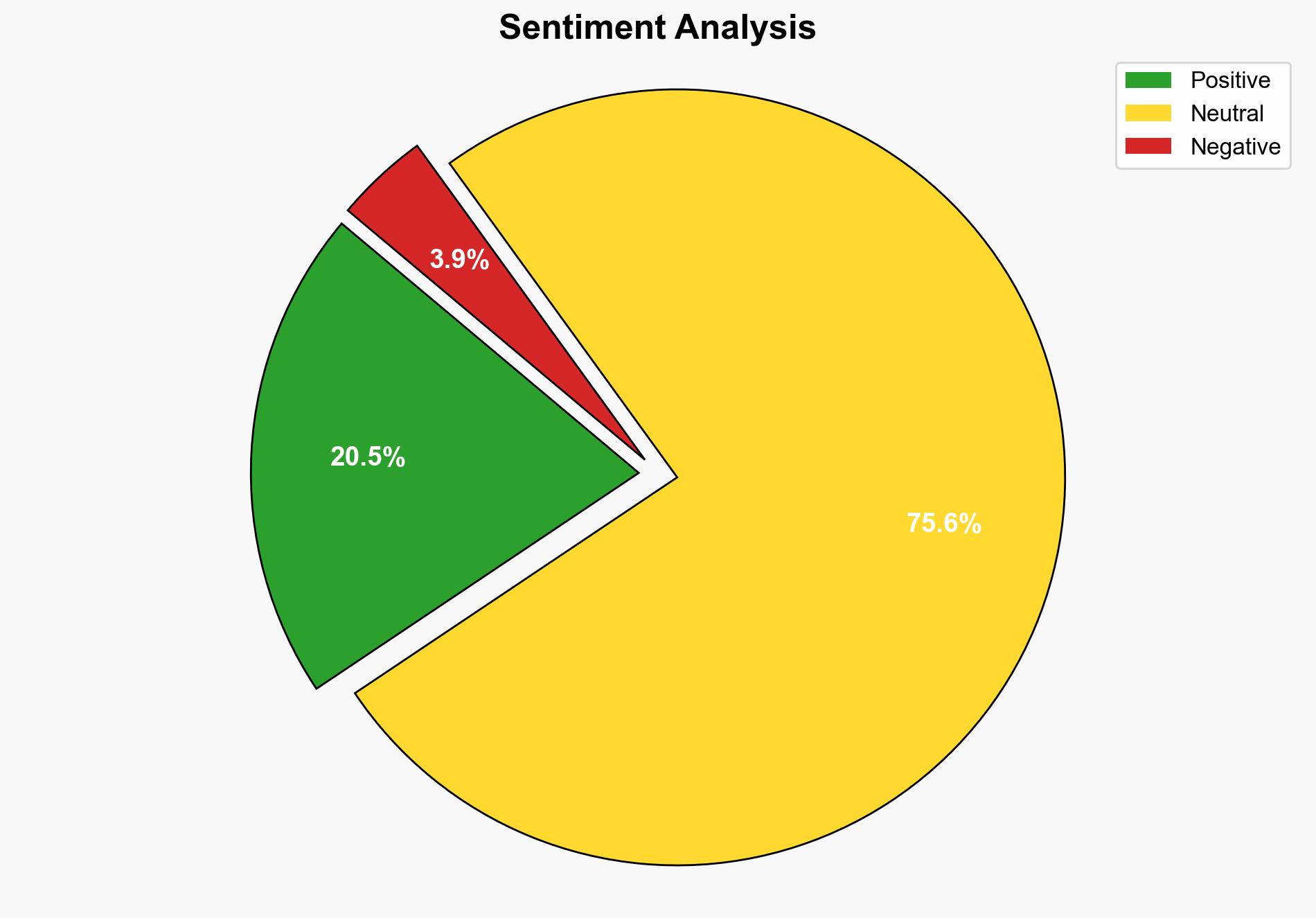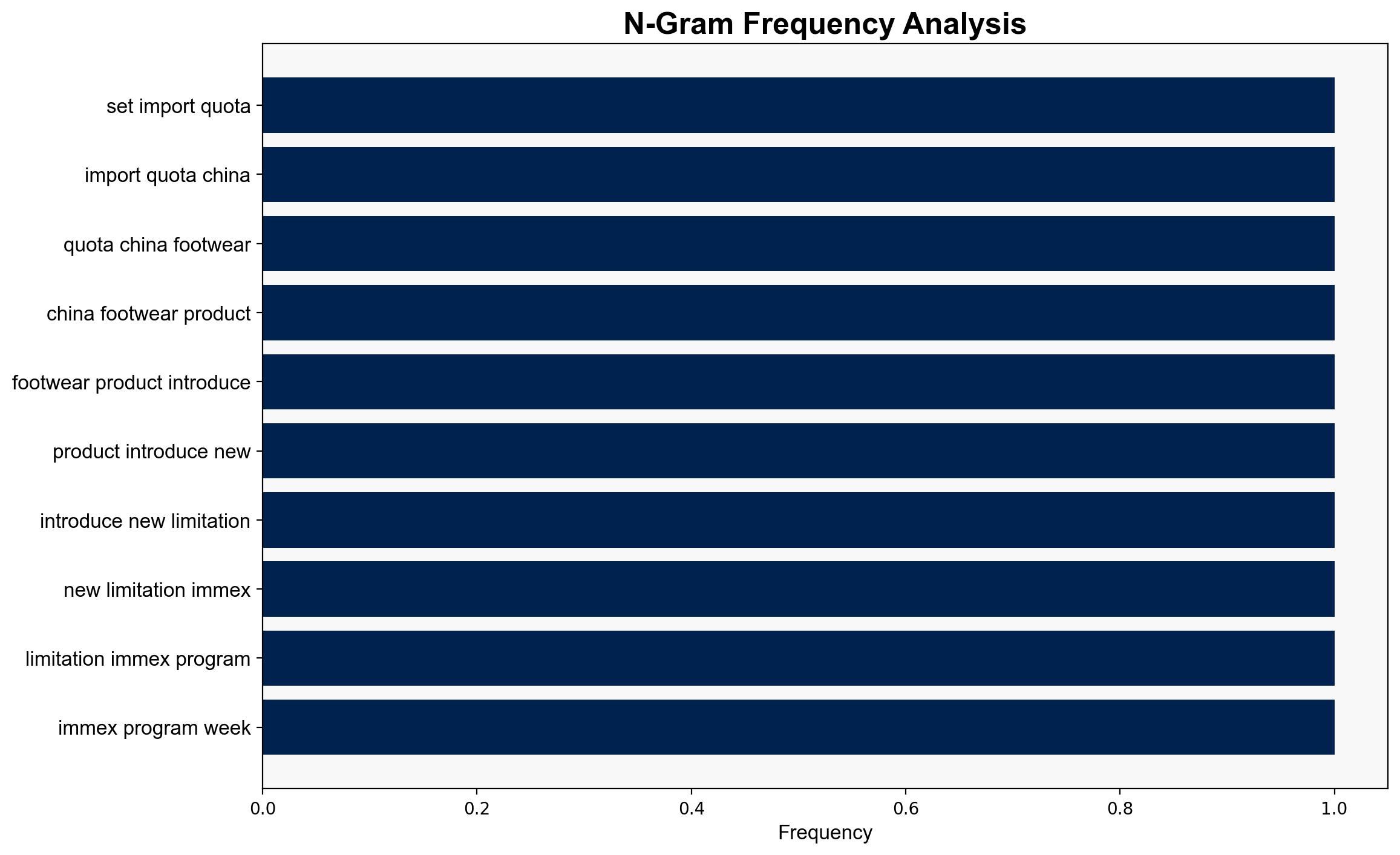Mexico Targets Asian Nations With Tariffs of Up to 50 – Sourcing Journal
Published on: 2025-09-12
Intelligence Report: Mexico Targets Asian Nations With Tariffs of Up to 50 – Sourcing Journal
1. BLUF (Bottom Line Up Front)
The most supported hypothesis suggests that Mexico’s tariff strategy is primarily aimed at addressing its trade imbalance with China while simultaneously aligning with U.S. interests under the USMCA framework. Confidence level: Moderate. Recommended action: Monitor China-Mexico diplomatic engagements and assess potential retaliatory measures from China.
2. Competing Hypotheses
1. **Hypothesis A**: Mexico’s tariffs are a strategic move to rectify its trade imbalance with China and strengthen its economic alignment with the United States under the USMCA framework.
– **Supporting Evidence**: The tariffs target countries without free trade agreements with Mexico, notably impacting China, with whom Mexico has a significant trade deficit. The move could curry favor with the U.S., which has expressed concerns over Chinese economic practices.
2. **Hypothesis B**: The tariffs are primarily a protective measure for domestic industries against Asian imports, particularly from China, to bolster local manufacturing and reduce dependency on foreign goods.
– **Supporting Evidence**: The tariffs cover a broad range of product categories, including textiles, apparel, and electronics, which are significant sectors in Mexico’s domestic economy.
Using ACH 2.0, Hypothesis A is better supported due to the geopolitical context and the strategic importance of U.S.-Mexico relations under the USMCA.
3. Key Assumptions and Red Flags
– **Assumptions**:
– Mexico assumes that the tariffs will not provoke significant retaliatory actions from China.
– The U.S. will view Mexico’s actions favorably and may offer economic or diplomatic support.
– **Red Flags**:
– Potential underestimation of China’s response capabilities and willingness to retaliate.
– Lack of detailed data on how the tariffs will impact Mexico’s domestic economy and consumer prices.
4. Implications and Strategic Risks
– **Economic Risks**: Potential increase in consumer prices in Mexico due to higher import costs, which could lead to domestic dissatisfaction.
– **Geopolitical Risks**: Strained China-Mexico relations could lead to reduced Chinese investment in Mexico, affecting infrastructure and manufacturing sectors.
– **Escalation Scenarios**: If China retaliates with its own tariffs or other economic measures, it could lead to a trade conflict that impacts regional stability.
5. Recommendations and Outlook
- Monitor diplomatic communications between Mexico and China for signs of escalation or resolution.
- Engage with U.S. counterparts to assess potential support or collaboration opportunities under the USMCA framework.
- Scenario Projections:
– **Best Case**: China accepts the tariffs with minimal retaliation, leading to improved trade balance for Mexico.
– **Worst Case**: A trade conflict ensues, damaging Mexico’s economy and diplomatic relations.
– **Most Likely**: Limited retaliatory measures from China, with ongoing negotiations to mitigate impacts.
6. Key Individuals and Entities
– Claudia Sheinbaum
– Marcelo Ebrard
– Lin Jian
7. Thematic Tags
national security threats, economic policy, trade relations, USMCA, China-Mexico relations




